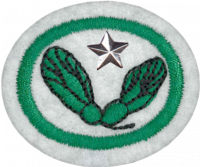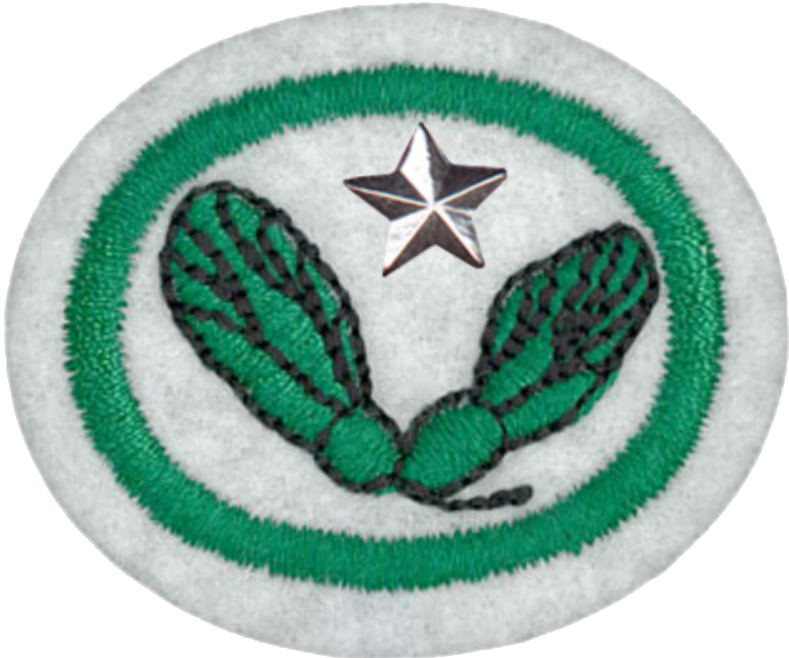Difference between revisions of "AY Honors/Seeds - Advanced/Answer Key/es"
(Created page with "Especialidades JA/Semilas - Avanzado/Respuestas") |
(Created page with "<noinclude>") |
||
| Line 2: | Line 2: | ||
<section begin="Body" /> | <section begin="Body" /> | ||
{{ansreq|page={{#titleparts:{{PAGENAME}}|2|1}}|num=1}} | {{ansreq|page={{#titleparts:{{PAGENAME}}|2|1}}|num=1}} | ||
| − | <noinclude> | + | <noinclude></noinclude> |
| − | </noinclude> | + | <!-- 1. Tener la especialidad de Semillas. --> |
| − | <!-- 1. | + | {{honor_prerequisite|displayname=Semillas|honor=Seeds}} |
| − | {{honor_prerequisite| | ||
| − | |||
| − | + | <noinclude></noinclude> | |
| − | <noinclude | ||
| − | |||
{{CloseReq}} <!-- 1 --> | {{CloseReq}} <!-- 1 --> | ||
{{ansreq|page={{#titleparts:{{PAGENAME}}|2|1}}|num=2}} | {{ansreq|page={{#titleparts:{{PAGENAME}}|2|1}}|num=2}} | ||
Revision as of 16:04, 22 April 2021
Nivel de destreza
2
Año
1961
Version
02.06.2024
Autoridad de aprobación
Asociación General
1
Para consejos e instrucciones, véase Semillas.
2
- a. Endospermo
- b. Radículo
- c. Plúmula
- d. Micrópilo
- Endosperm
- Endosperm is the tissue produced in the seeds of most flowering plants around the time of fertilization. It surrounds the embryo and provides nutrition in the form of starch, though it can also contain oils and protein.
- Radicle
- The radicle is the first part of a seedling (a growing plant embryo) to emerge from the seed during the process of germination. The radicle is the embryonic root of the plant, and grows downward in the soil.
- Plumule
- The plumule is the embryonic shoot. It is the precursor to the stem and leaves of the plant.
- Micropyle
- The micropyle is an opening in a plant's ovule (the structure that gives rise to and contains the female reproductive cells). The micropyle opening allows the pollen tube to enter the ovule for fertilization. In gymnosperms (e.g. conifers), the pollen itself is drawn into the ovule and the micropyle opening closes after pollination. During germination, the seedling's radicle emerges through the micropyle.
3
In monocotyledons (or simply monocots), the seed embryo has one cotyledon while the embryo of the dicotyledon (or dicot) has two. The major leaf veins in a monoct are parallel, but they are branched in a dicot. The flower parts (petals, sepals, etc.) in monocots are multiples of three while in dicots are multiples of four or five.
Monocots
- Corn
- Grasses (such as wheat, rye, barley, etc.)
- Lilies
- Onions, garlic
Dicots
- Roses
- Asters
- Nightshades (tomatoes, potatoes, etc.)
- Squash, pumpkin
- Beans
4
5
A chief difference between spores and seeds as dispersal units is that spores have very little stored food resources compared with seeds, and thus require more favorable conditions in order to successfully germinate. Seeds, therefore, are more resistant to harsh conditions and require less energy to start cell division. Spores are usually produced in large numbers to increase the chance of a spore surviving.
6
You can read this text online or you can get a copy of the book at The Adventist Book Center.
This text is a discourse on the parable of the sower as found in Matthew 13. Ellen White illustrates several spiritual lessons based on this parable.
7
8
The two families of plants are the moncots and the dicots. To see the difference, cut a corn kernel and a bean in half. The corn seed will be difficult to divide, but the bean will almost divide itself in half at the boundary between the two cotyledons.
References
- Pages using DynamicPageList3 parser function
- AY Honors/Prerequisite/Seeds/es
- AY Honors/See Also/Seeds/es
- Adventist Youth Honors Answer Book
- Adventist Youth Honors Answer Book/Do at home
- Missing Localization/All/Seeds Advanced AY Honor.png/es
- Missing Localization/All/Naturalist/en
- Missing Localization/All/Botany/en





